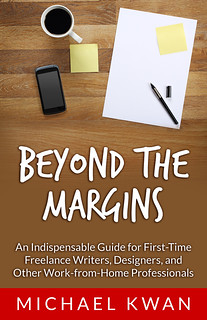The words we use to describe the food we eat say a lot about our upbringing. For example, do you know the difference between garbanzo beans and chickpeas? (They’re the same thing.) One thing that I’ve really come to learn is, despite my insatiable desire to eat all the world’s cuisines, we really have a lot more in common that we might think. At the same time, it’s through subtle nuances in flavor and ingredients that we end up with such a huge range on our respective tables.
Take the humble noodle as a terrific example. A plate of spaghetti and meatballs is quite different from a bowl of Vietnamese pho, yet they also share a lot of similarities. A can of store brand chicken noodle soup is hardly the same thing as Filipino pancit bihon or Indonesian mee goreng, but they share the same fundamental foundation. And truly, one of the easiest and greatest steps anyone can take as part of their anti-racism education is to eat the food of cultures other than their own.
Break Bread, Eat Rice

The late Anthony Bourdain firmly believed in this. In this words:
I urge you to travel — as far and as widely as possible. Sleep on floors if you have to. Find out how other people live and eat and cook. Learn from them — wherever you go.
Many people who harbor racists thoughts and beliefs simply haven’t been exposed to other cultures. They haven’t immersed themselves in other ways of living. I’m certainly not saying that all people who don’t travel are racist. That’s definitely not the case. What I am saying is that traveling to other parts of the world opens you to whole new perspectives. And a great entry point, the one thing that unites us all, is food.
Particularly if you have the opportunity to sit down with a family whose background is different from your own, especially if you can enjoy an “authentic” or “typical” meal with them, you really get to know them as a people. It’s remarkably humanizing. And if you can get to the far flung corners of the globe, visiting local restaurants can go a long way too. Dare to order something outside of your comfort zone.
You learn a lot about people through their food. And you also learn that despite surface differences, we share the same core. Many of us are lucky to have grandmas and other elders in our family who lovingly prepare traditional recipes. It’s from your grandma’s baked ziti or my aunt’s zongzi that we derive an almost indescribable comfort.
Examples of Universal Food
Whether you’re talking about Trinidadian food, Korean food, or Mexican food, we really start to see several of the same fundamental themes when we take the time to look. There are differences, to be sure, but we also see universal connections. Like, almost every world cuisine has some variation of a dumpling or filled bun-like thing you can eat with your hands.

Some examples that illustrate how we’re a world united by food include…
- The dumpling: Wonton (China), gyoza (Japan), tortellini (Italy), pierogi (Eastern Europe), samosa (India), knish (Jewish)
- The fried dough: Bannock (Indigenous North American), youtiao (China), beignet (France and New Orleans), churro (Spain and Mexico)
- The wrap: Burrito (Mexico), lettuce wraps (China), gyro (Greece), roti wrap (Trinidad)
- The leaf wrap: Zongzi (China) tamale (Mesoamerica), onigiri (Japan), dolma (Middle East), cabbage roll (Eastern Europe)
- The flatbread: Naan (India), scallion pancake (China), pizza (Italy), lavash (Armenia/Iran), matzo (Jewish), pita (Middle East), tortilla (Mesoamerica)
- The filled bun/turnover: Empanada (Spain), arepa (Colombia and Venezuela), siopao (Philippines), cha siu bao (China), Jamaican patty (Jamaica)
- BBQ meat on a stick: Persian kabob (Iran), Xinjiang lamb skewers (China), souvlaki (Greece), brochettes (France and Vietnam)
- Savory stew: Goulash (Hungary), beef bourguignon (France), kimchi jjigae (Korea), beef Stroganoff (Russia), burgoo (United States), tajine (Morocco and Algeria)
The origins of some dishes are disputed. The stuffed cabbage roll may have started in Albania, Greece, Bulgaria, Croatia, Romania or Turkey. That’s beside the point for the purposes of this post. I also recognize that I mentioned a lot of Chinese food there, but it’s what I’m most familiar with as a Chinese Canadian. That being said, I very much appreciate how our food options are getting increasingly diverse (and specific) in Metro Vancouver.
United by Food: Live, Eat, Love
Korean spicy fried chicken isn’t the same thing as fried chicken from the southern United States, just as it’s not the same as Japanese chicken karaage or Austrian backhendl…. but it’s all fried chicken. The same can be said about all the different takes on barbecue from around the world.
So, take the time and make the effort to eat food from a variety of cultures. Start by finding some common ground, step outside your “usual,” and forge those important connections and channels of mutual understanding. Bon appetit! Itadakimasu! Mang-mang sik, la!





Love the multicultural-ness of this post!
I’m fascinated by these connections between cultures and foods. Same, but not the same, and that’s why they’re so awesome.